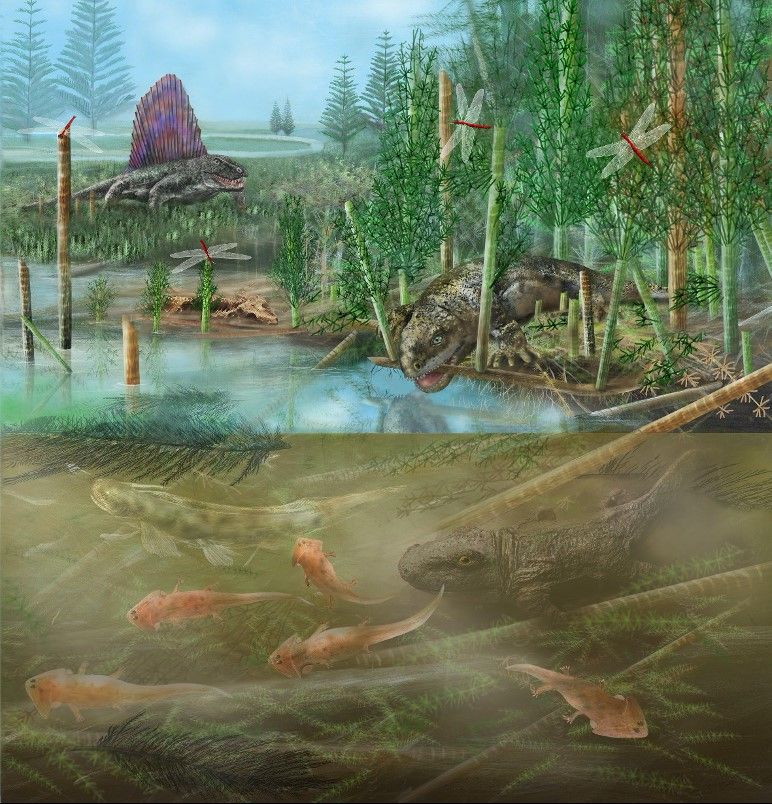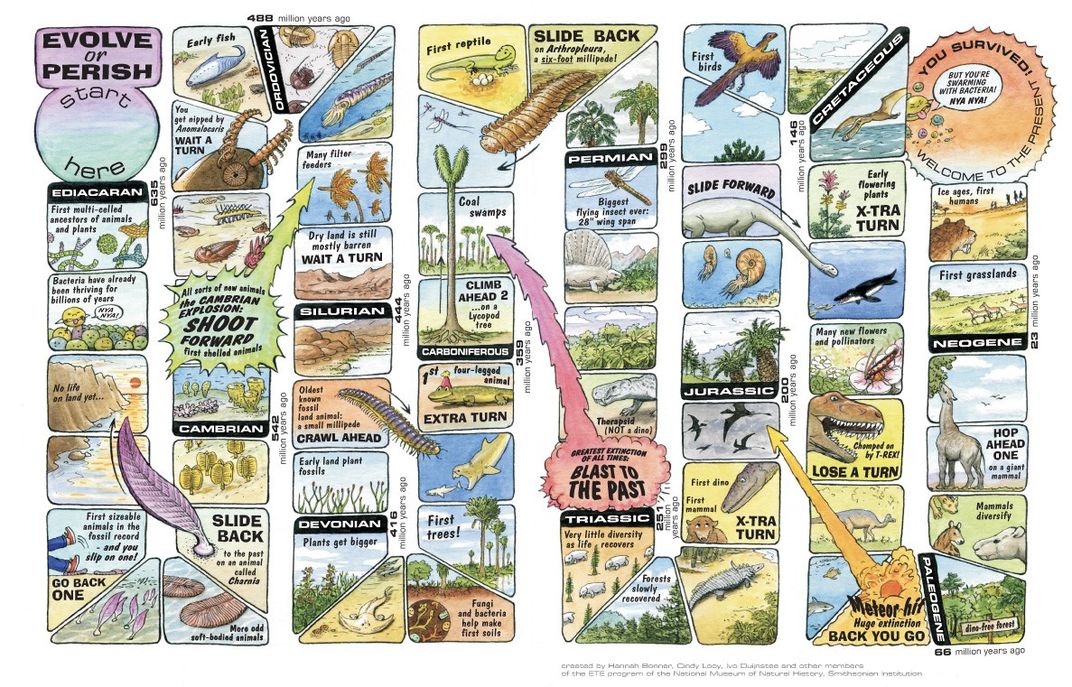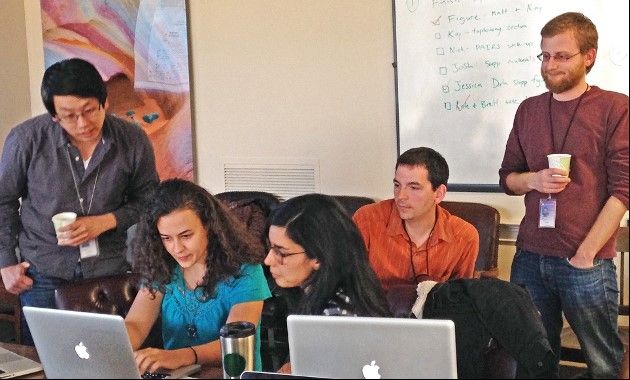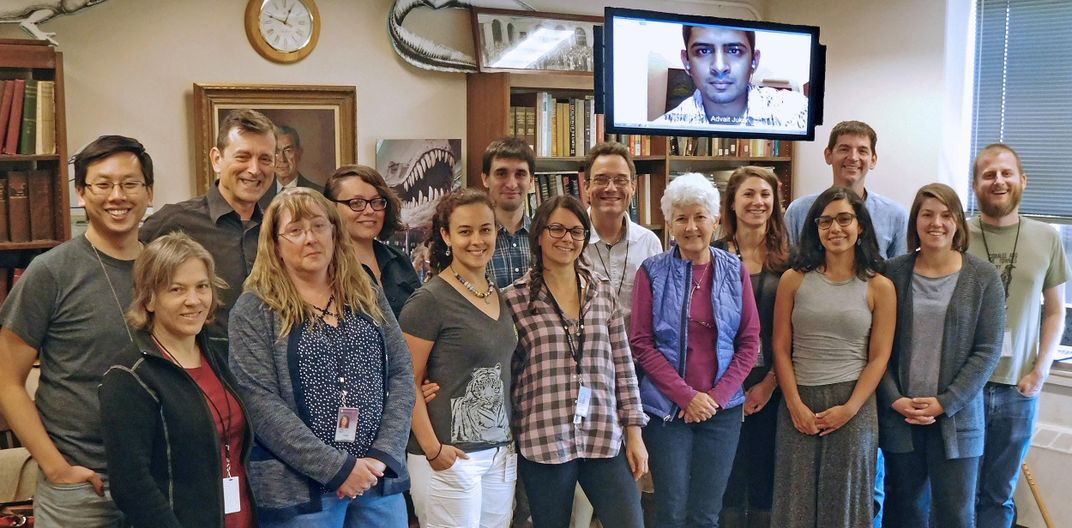NATIONAL MUSEUM OF NATURAL HISTORY
Interdisciplinary Study Shows How Species Interactions Affect Evolution
The study shows that it’s possible to model how competition for resources, symbiosis or predation shapes the evolution and survival of species.
/https://tf-cmsv2-smithsonianmag-media.s3.amazonaws.com/blogging/featured/Artist_rendering_of_dinosaurs_in_a_forrest..jpg)
The fossil record provides clues for how current species evolved from earlier life-forms. Until recently, researchers attributed most changes — growth in populations, evolution of new traits or extinctions — to shifts in climate.
“One of the reasons that evolutionists tend to focus on climate is that it's easier to get that kind of information,” said Kay Behrensmeyer, senior research geologist and curator of vertebrate paleontology at the Smithsonian’s National Museum of Natural History.
33 years ago, Behrensmeyer helped found the Evolution of Terrestrial Ecosystems (ETE) program — a group of scientists from several museum departments that studies the evolution of organisms and ecosystems over millions of years. The current NSF-sponsored ETE working group published a review paper this month about how species interactions also shape evolution.
“Since Darwin and before, it’s been recognized that species really do affect each other, but it’s very hard to tease that kind of information out of the fossil record.” Behrensmeyer said. “Researchers know it's important, they just haven't had the tools to say how that would play out over long periods of time.” The new review paper provides a roadmap that could change that.

The working group evolves
Danielle Fraser, the study’s lead author and a former postdoctoral fellow at the museum, said the paper shows that it’s possible to model how competition for resources, symbiosis or predation shapes the evolution and survival of species. “We’re interested in the broad array of things that have influenced how life on Earth evolved and how those ecosystems on land evolved,” she said. “The interactions among organisms is one facet of that. We are also interested in climate and human activity.”
The paper, which spans several ecosystems and geological time scales, demonstrates the core focus of the ETE project: it uses the fossil record in new and innovative ways to delve into why ecological communities look the way they do. “It’s very representative of how ETE challenges the scientists that are members of it to think more broadly than they might in their own research programs,” said Fraser.
At meetings, researchers exchange ideas, decide on projects and organize teams for carrying them out. Behrensmeyer likens the group to a well-oiled machine. “Initially, we got together to create a database that would allow us to look at associations of plants and animals through time,” she said. Over the years, with leadership from Behrensmeyer, paleoecologist S. Kate Lyons and ecologist Nick Gotelli, ETE grew into a think tank that has supported field research, mentored graduate students and organized workshops and outreach events.

Symbiotic relationships
Long-term funding from the Smithsonian and the National Science Foundation and collaborations across different fields have allowed the group members to tackle questions that would be difficult to answer in other settings. Together, they investigate interactions between species in the context of their environments to reveal larger patterns about how life changes over hundreds of millions of years. The projects often require multiple years of data collection and analysis and incorporate ideas from different disciplines. “Putting a lot of good minds together can make it possible to discover things that are broader-spectrum,” said Behrensmeyer. ETE often focuses on questions outside the scope of a single subject.

Group members appreciate the social connections as well. “We have people who are really established and who have put out a lot of game-changing work, but we’ve also got postdocs and PhD students,” said Fraser. Senior scientists offer advice on teaching and research challenges, and early-career researchers infuse discussions with excitement and fresh perspectives. “Being exposed to people at different career stages and people who work on different organisms and use different methodologies expands the way that you think about your own science,” said Fraser. “It’s been one of the most fulfilling experiences that I’ve had as a scientist.”

At risk of extinction
ETE’s current grant will come to an end in December, but its members hope for a new boost. “It’s been a really wonderful part of my career,” said Behrensmeyer. “I know that even if ETE doesn’t continue as before, the people who have formed professional connections from being part of our working group will continue to collaborate and help each other into the future.”
Related Stories:
Meet the Scientist Using Fossils to Predict Future Extinctions
What A 1000-Year-Old Seal Skull Can Say About Climate Change
Meet the Scientist Studying How Organisms Become Fossils
The Experts Behind the New Fossil Hall Wrap Their Minds Around ‘Deep Time’
Old Fossils, New Meanings: Smithsonian Exhibit Explores the History of Life and What it Means for Our Future

